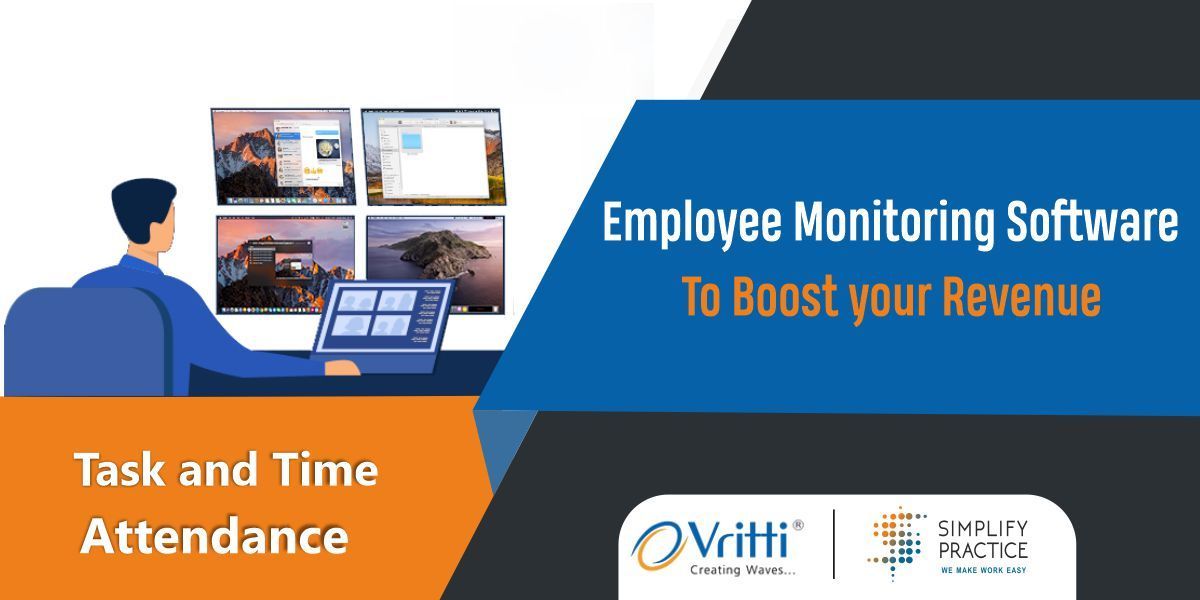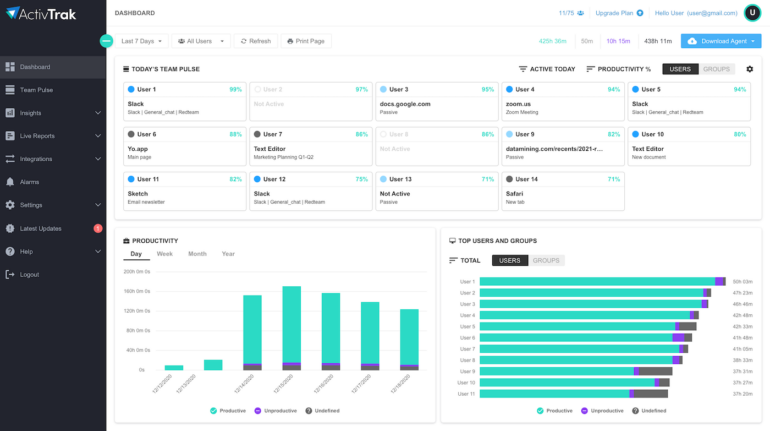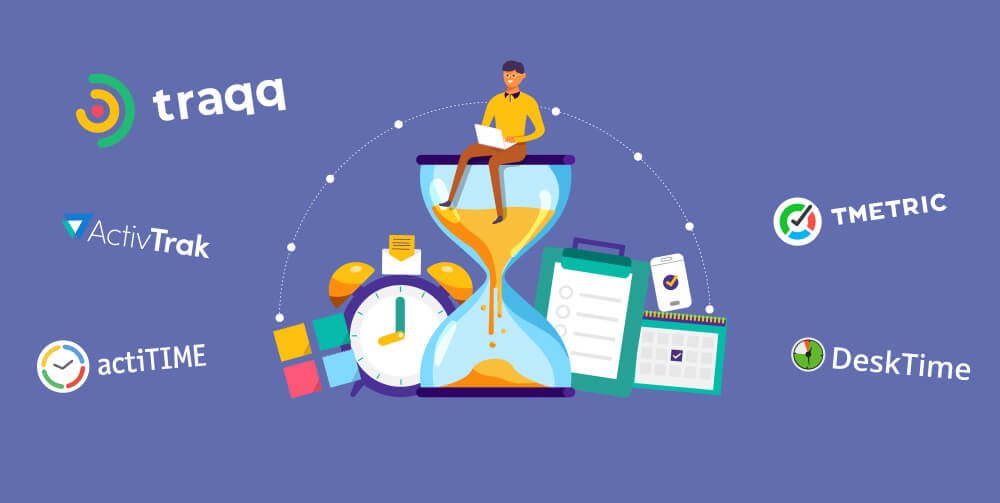It's a type of software that enables organizations to monitor, trace, and record the actions of their employees. It lets employers collect information regarding employee behaviors, such as Internet usage applications, keystrokes, usage of the Internet or even screen shots. Software designed to monitor employee behavior is primarily used to boost productivity, check compliance with company policies, safeguard sensitive information and address security issues. When choosing a software for monitoring employees it is important to consider a variety of aspects. Be aware of these key aspects features. Choose the features you require in line with your organization's needs. Features include email monitoring, activity monitoring blocking websites, keystroke recording, tracking application usage, and monitoring email. Make sure you prioritize features according to your monitoring goals.
Compliance and Privacy - Make sure that the software complies with legal and ethical guidelines in relation to employee monitoring. Learn about the applicable laws, regulations and laws in your area. Find software that has transparent and configurable privacy settings that protect the rights of employees.
Take into consideration the software's usability as well as accessibility. Simple user interfaces and easy setup processes will reduce time and simplify the implementation. Consider a dashboard that is customizable with intuitive reporting tools, as well as other options that allow you easily to navigate and interpret collected data.
Integration and Compatibility - Make sure that the software you choose to use will integrate seamlessly with the IT infrastructure that you are using and the systems you are employing, such as email clients and collaboration platforms, as well as software for managing projects and operating systems. The integration of compatible monitoring will ensure smooth operations without causing disruptions to day-today activities.
Data Security- Examine the security measures of your software to ensure the security of the data you collect. Access controls as well as encryption and secure storage of data and conformity to industry-standard security protocols are vital. Make sure that the software provider has robust security practices and an established track record of data protection.
Scalability- You must consider the software's scalability to accommodate the growing needs of your company. Select software that is easily scalable to accommodate your evolving needs in the event of expanding your workforce or opening new offices.
Reporting and Analytics- Assess the capabilities to report on the software. Find features that offer comprehensive insights into the productivity of employees, their the allocation of time, and other trends. Customized reports and analytics can assist you in making educated decisions and identify areas for improvement.
Customer Support - Assess the quality of customer service provided by the vendor. Assess their availability, responsiveness and the quality of technical support. Good customer support ensures prompt assistance when problems arise.
Cost- Take note of the pricing model for the program. It could be a one-time fee either subscription or usage-based. Learn about the pricing structure, which includes any additional costs for support, upgrades, or other features. Your budget should be balanced as well as the worth of features against the amount you are able to afford.
Transparency and communication with employeesBe transparent and communicate clearly to your employees regarding the use and implementation of monitoring software. Transparently communicate the purpose and scope of work and expectations with respect to the monitoring. Be sure to address any concerns and make sure they are aware that privacy rights will still be protected.
By evaluating these factors, it is possible to make an educated choice that meets your company's specific needs and respects employee privacy while meeting all legal requirements. View the recommended time tracking monitoring services for more info.

What Are The Features Of Employee Monitoring Software And How Do They Vary?
The software for monitoring employees has a wide range of features to track and analyze employee activities. Certain features are standard to all employee monitoring software. This feature offers a comprehensive overview of the time employees spend working.
Keystroke Recording Keystroke recorders record every keystroke that is pressed by an employee. It can be used to assist in finding productivity bottlenecks, deterring unauthorized activities and gathering evidence during an investigation.
Screenshots and screen recording- Certain software can record employee screens in real-time or creates screen shots at regular intervals. This feature is useful in monitoring productivity, ensuring compliance and troubleshooting problems.
Internet Usage Tracking - This feature tracks employee's online activities, including websites visited and search queries, and downloads of files. It is used to detect excessive browsing that is not related to work, security threats, or policy violations.
Application Usage Tracking - This feature is used to track which apps employees use during working hours. It offers insight into which apps are the most frequently used, as well as helping to detect any excessive or inappropriate applications.
Email Monitoring - Email monitoring allows employers monitor employee emails that include received and sent messages, as well as email content. Employers can be sure that policies are in compliance, prevent data leaks and investigate suspicious activity.
The tracking of documents and files This feature allows you to monitor changes to files, access and transfers. It protects sensitive data and monitor document collaboration.
Remote Monitoring is a function which allows employers to keep track of their employees, even if they are working from a distance or at varying places. Employers can keep track of the activities of employees and monitor their productivity, regardless of the location they're physically.
Productivity Analysis Software for monitoring employees usually comes with productivity analysis tools that offer insights into employee productivity as well as work patterns and time allocation. These analyses help optimize workflow and identify areas of improvement.
Analytics and ReportingThe robust analytics and reporting features produce precise reports and graphs using the data collected. These reports provide valuable insight into employee performance, resource allocation, and time management.
Software solutions that include features for compliance and management of policies will help you ensure compliance to company and industry guidelines and regulations. Employers can establish and enforce policies of their company on acceptable computer usage.
Alerts and Notifications Alerts alert managers as well as employers of certain events. They may alert you to excessive use of the internet or attempts to gain access to restricted websites, or unsettling behavior.
It is important to recognize that these features will vary dependent on the software you choose. When you choose a program make sure you select features that meet your needs for monitoring and comply to local ethics and legal guidelines. See the top rated time tracking monitoring services for blog info.

What Software Is Used To Monitor Employee Performance? How Does It Adhere To Compliance And Privacy Law?
It is essential that software used to monitor employees is compliant and adheres to data privacy laws. While the specific legal requirements can differ from jurisdiction to jurisdiction Here are some of the most common ways in which employee monitoring software is in compliance with compliance and privacy laws- Consent and Notice - Many jurisdictions require that employees provide informed consent and receive prior notification of any monitoring activities. The programs that monitor employees often have features that help employers effectively communicate monitoring guidelines to employees. This can be done by sending written notices to employees, getting their consent using consent forms or implementing an employee handbook that outlines the monitoring procedures.
Transparent Monitoring policies- Employee monitoring programs promote transparency because they help employees comprehend what kind of information is collected, the goal of monitoring is, and in what extent monitoring activities are executed. Clear and comprehensive policies allow employees to understand the boundaries as well as the rights to privacy and monitoring.
Data Minimization: To ensure that employee monitoring programs are in compliance with privacy laws, they often adhere to the principle of minimization of data. It means only the necessary information is collected and kept, and irrelevant or excessive data is discarded. The software promotes conformity by restricting the data collected to only what is required for monitoring.
Anonymization and Aggregation: Some software that monitors employees anonymizes the data or aggregates it to safeguard privacy of employees. Data collected is anonymized to eliminate personally identifiable information. The data aggregated comprises multiple employees' data in order to gather insights at the group level, without identifying particular individuals.
Secure Data Storage and Encryption Software to monitor employees places a high priority on the security of the data collected. It employs methods for secure storage of data and encryption to protect collected data against unauthorised access, breaches, or accidentally disclosed data. This also includes safeguarding data on the move and at the rest of its life.
Access Controls, Restricted Permissions – In order to make sure that the company is in compliance with laws employee monitoring software offers granular permissions and access controls. This allows employers the ability to limit access to monitoring data to individuals with legitimate needs for example HR personnel or the designated administrator.
Employee Rights and Redress - Respecting rights of employees is an essential aspect of complying with privacy and compliance regulations. A lot of employee monitoring programs have tools that allow employees to view their own data and make corrections, or even submit complaints. Employees have the option to seek recourse in case of a privacy violation, and also make use of their rights.
Conformity to Data Protection Regulations – The employee monitoring software is built to conform with applicable laws on data protection including the General Data Protection Regulations in Europe or California Consumer Privacy Acts in America. This includes implementing measures to protect personal data and honor the rights of data subjects.
In addition to employing employee monitoring tools businesses should also seek out legal experts and keep up-to-date on laws and rules in their respective jurisdictions. Adhering to compliance and privacy laws requires a holistic strategy that goes beyond the software itself, including explicit policies, education for employees and continuous monitoring of compliance. View the top time tracking monitoring software for blog examples.
